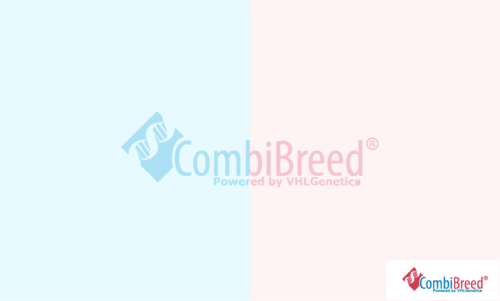K-Locus (Dominant Black)
The K-Locus (also known as the Dominant Black Locus) is one of the most fundamental factors in the development of a dog’s coat colour. The K-Locus corresponds to the gene Beta-defensin 103 (CBD103). This gene affects pigment switching between eumelanin (black) and phaeomelanin (red or yellow) by interacting with the Agouti (A-Locus) and MC1R (E-Locus) genes.
Inheritance
The wild-type allele of the K-locus is known as ky, which stands for Recessive Yellow. However, a certain mutation to CBD103 can results either in kbr (Brindle) or KB, the Dominant Black allele. The kbr is dominant over ky, and dogs with this allele show a distinctive “tiger stripe”-like mix of dark and light patches. However, the mutation responsible for Kbr has not yet been discovered, and it is therefore not possible to genetically test for it.
Dominant to the kbr is the KB allele. A dog with one KB allele is unable to express the Agouti gene or exhibit reduced Agouti expression. This leads to an expected display of solid eumelanin pigmentation, rather than any combination of dark and light hairs in the coat in coloured areas on the body. With two KB allele’s, the dog is unable to express the Agouti gene, leading to solid eumelanin pigmentation. Meaning that the K-Locus is dominant over the A-Locus.
The opposite holds for the MC1R gene. This gene is dominant over K-Locus: a dog affected by the recessive red/yellow mutation of the E-Locus cannot form a Dominant Black coat, as it cannot produce dark hairs. Therefore, the overall appearance of the coat colour and pattern is determined by a combination of genotypes at the different Loci including the Dominant Black (K-Locus), Agouti (A-Locus), MC1R (E-Locus), Brown (B-Locus) and merle.
Relevant tests
- H819
